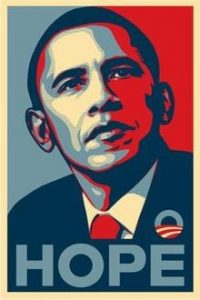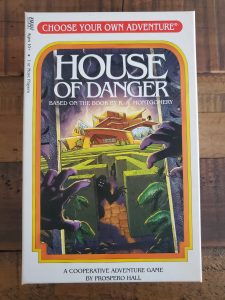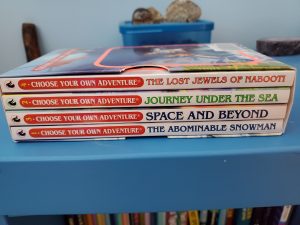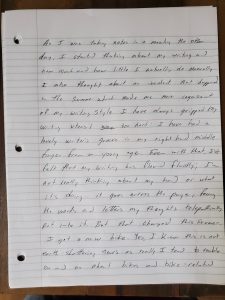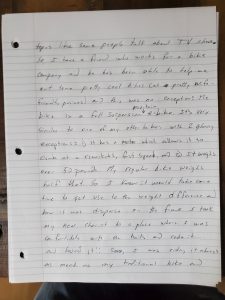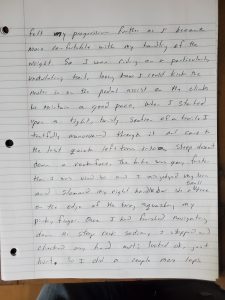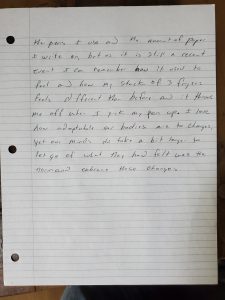
“Now, the making of a good compilation tape is a very subtle art. Many do’s and don’ts. First of all, you’re using someone else’s poetry to express how you feel. This is a delicate thing.”
Rob (John Cusak), High Fidelity (2000)
This assignment brought me back to my younger years when I worked (volunteered really) in my friend’s record store in Nanaimo. We listened to EVERYTHING that came into the store and critiqued, lambasted, and relished all of it. As long as it was in the store, we could listen to it. Now, I have Spotify… it is what I used to find the songs on the Voyager Golden Record (there was a playlist!) because, as big as my collection is, it did not have all those cuts. Spotify is expansive! But… I have records that are not on it; quite a few actually. This brought back Abby Smith’s article “Why Digitize?” and the notion of digitalizing everything.
“Depending on the policy of a library or archival institution, the original of a scanned item may or may not be retained after reformatting.” Smith (1999)
A big part of the story behind a record is that artwork that graces the covers and inside of an LP. Time and effort go into that process and I believe that it is becoming a dying art form as we all enjoy music digitally without stopping to take in the entire package (I can still remember the first time I saw my Dad’s copy of The Rolling Stones’ Sticky Fingers with an actual zipper built into… I still have it!) like the artist expected. Just because we have digital copies of something does not mean that the original should be discarded and forgotten.
So, back to our assignment, I found this “curating” quite a hard assignment as not only am I judging one artist’s work over another without really any knowledge about a lot of these pieces, I am tearing apart some pretty smart people’s mixtape. I decided in the end to go with the easiest knowledge base I could think of: I went with songs I liked and felt I could connect with. And in that there are biases: I’m not a fan of voice-only tracks (I actually prefer instrumental music), classical music with loads of instruments (symphonies) tend to make me zone out, my parents’ favourite music obsession when I was young was collecting Mozart operas (and listening to Bob Seger and The Silver Bullet Band on repeat… sigh, thanks Dad) so I have a sentimental attachment, I really enjoy music that is different, with strange sounds or instrumentation, and I think both Louis Armstrong and Glenn Gould are musical geniuses. So, with all these biases completely on my sleeve I went and chose my ten. Which leads me to another quote:
“The making of a great compilation tape, like breaking up, is hard to do and takes ages longer than it might seem. You gotta kick off with a killer, to grab attention. Then you got to take it up a notch, but you don’t wanna blow your wad, so then you got to cool it off a notch. There are a lot of rules.”
Rob (John Cusak), High Fidelity (2000)
My Voyager Golden Record Mixtape
“Melancholy Blues,” performed by Louis Armstrong and his Hot Seven. 3:05
Japan, shakuhachi, “Tsuru No Sugomori” (“Crane’s Nest,”) performed by Goro Yamaguchi. 4:51
Senegal, percussion, recorded by Charles Duvelle. 2:08
Bach, The Well-Tempered Clavier, Book 2, Prelude and Fugue in C, No.1. Glenn Gould, piano. 4:48
China, ch’in, “Flowing Streams,” performed by Kuan P’ing-hu. 7:37
Azerbaijan S.S.R., bagpipes, recorded by Radio Moscow. 2:30
Solomon Islands, panpipes, collected by the Solomon Islands Broadcasting Service. 1:12
India, raga, “Jaat Kahan Ho,” sung by Surshri Kesar Bai Kerkar. 3:30
Mozart, The Magic Flute, Queen of the Night aria, no. 14. Edda Moser, soprano. Bavarian State Opera, Munich, Wolfgang Sawallisch, conductor. 2:55
“Dark Was the Night,” written and performed by Blind Willie Johnson. 3:15
(Most of the writing for this was done while listening to The Beta Band’s 3 EPs… which will make sense if you have seen High Fidelity.)
Reference:
Smith, A. (1999). Why digitize? Retrieved June 15, 2019, from Council on Library and Information Resources website: https://www.clir.org/pubs/reports/pub80-smith/pub80-2/


